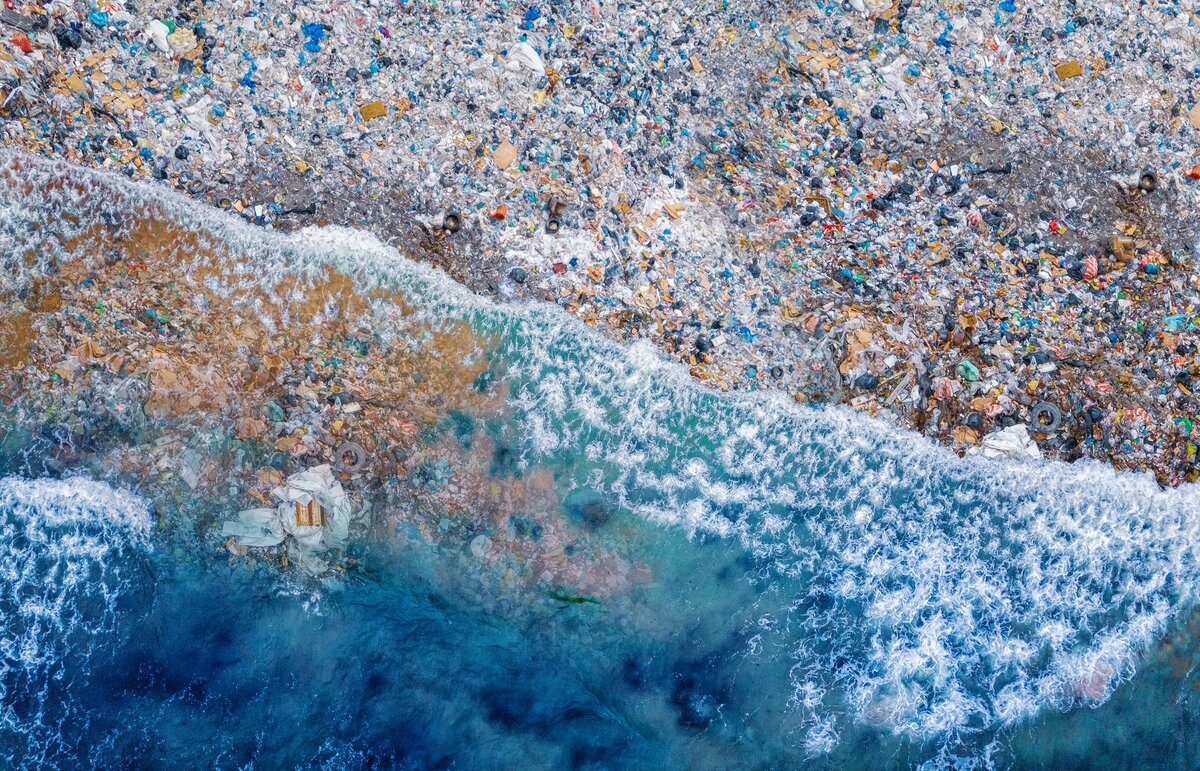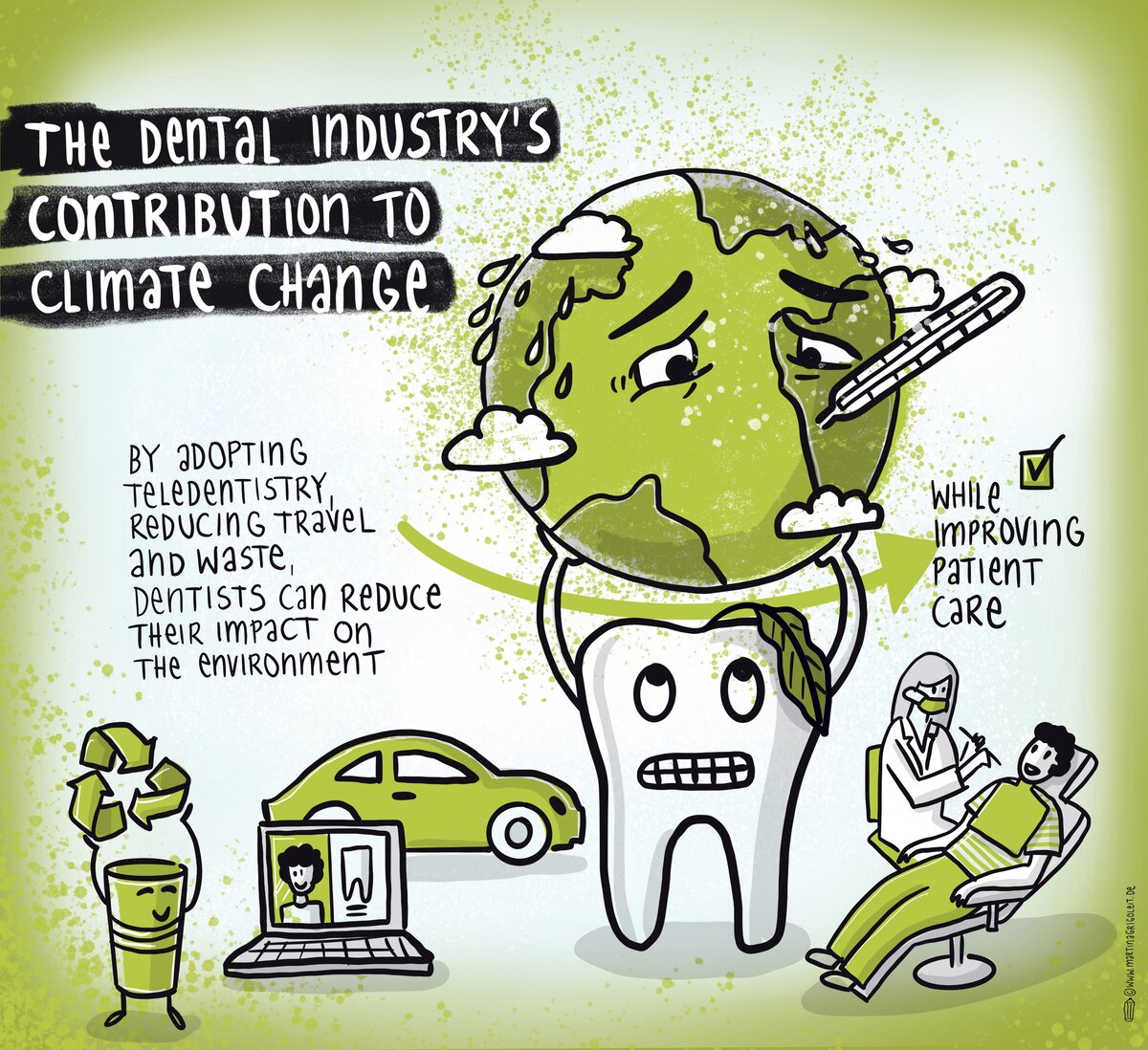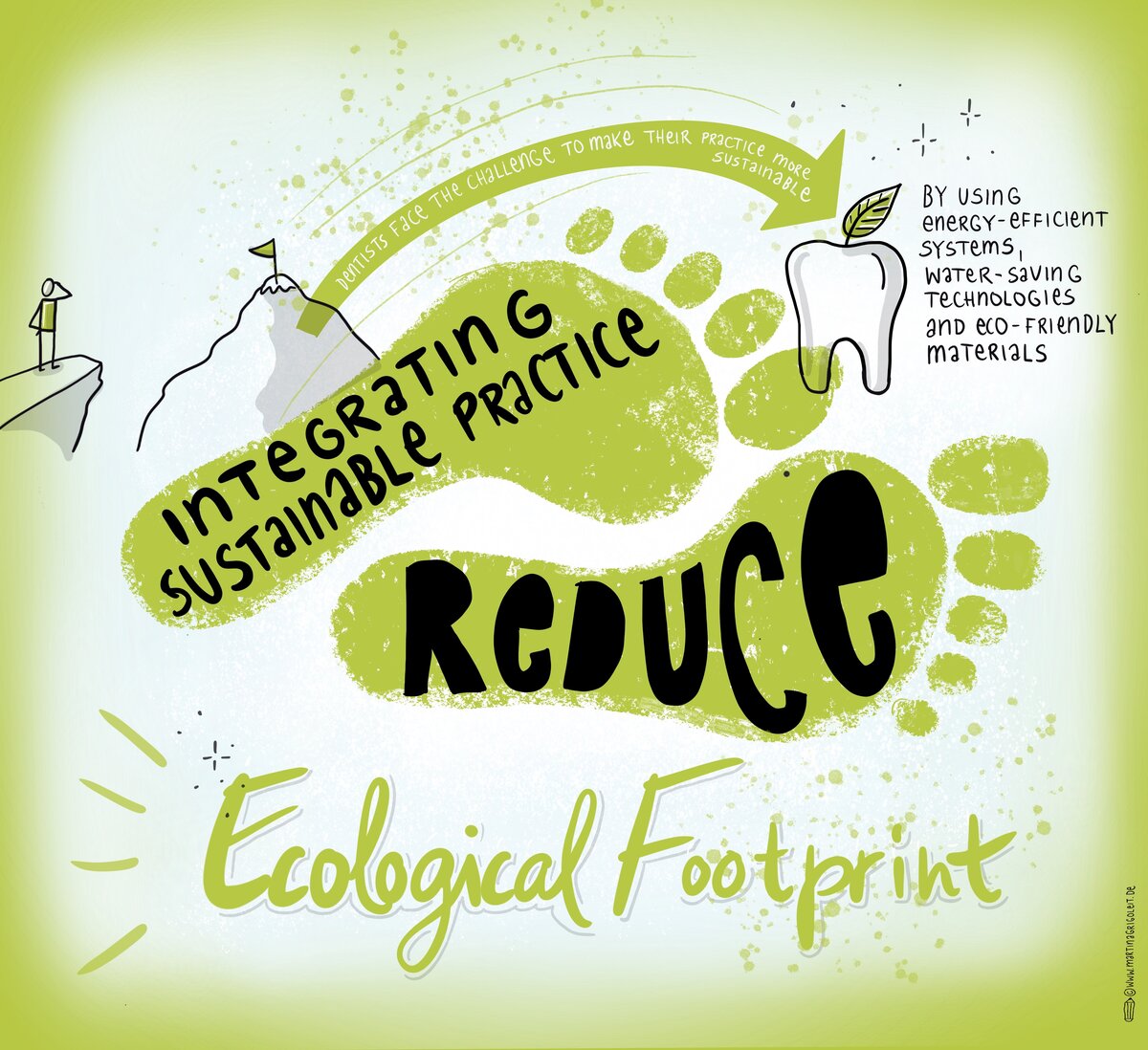Therapy, Responsible Periodontology, Article
Green dentistry: a way forward for oral-health professionals
05 July 2024

Sustainable or green dentistry is an evolving field that aims to integrate environmentally friendly practices into dental care. The EFP has been at the forefront of this initiative, emphasising the importance of sustainability in periodontology. In this article, Christoph Ramseier explores the challenges and opportunities for dental professionals – whether in larger dental clinics or smaller dental practices – to adopt sustainable practices, drawing on recent studies and the EFP’s Responsible Periodontology and Sustainability initiative.
Climate change is a major global issue that affects all sectors, including healthcare and dentistry. Rising global temperatures, the increased frequency of extreme weather events, and changing precipitation patterns pose significant challenges to public health and the environment.
For dental practices, these climate-related changes can disrupt activities, supply chains, and infrastructure. As climate change worsens, extreme weather events such as hurricanes, floods, and heatwaves can cause power outages, water shortages, and damage to facilities, affecting the ability to provide consistent dental care. In addition, climate change increases the spread of disease and environmental hazards, which can increase the burden on health systems, including dental services.
Furthermore, the dental industry itself contributes to climate change through its carbon footprint of energy use, travel, and waste production. As healthcare providers, dental professionals have a responsibility to reduce their environmental impact by adopting sustainable practices. These include reducing energy consumption, minimising waste, and promoting the use of environmentally friendly materials.
The problem of plastic waste

Between the west coast of the United States and Hawaii lies a floating mass of plastic debris – sometimes referred to as the “eighth continent” – weighing an estimated three million tonnes. This huge accumulation of plastic is a striking reminder of the environmental impact of waste. To visualise this, imagine something three times the size of France or 4.5 times the size of Germany, with the weight of about two million cars, and enough plastic to fill 300,000 garbage trucks.
The problem of plastic waste goes beyond visible debris. Nano- and microplastics, tiny fragments of plastic 0.001-1000µm in size, are ubiquitous in European environments. These plastics, mostly polyethylene – which can be found in human bodily fluids and even in foetuses – come from a variety of sources, including cosmetics, synthetic clothing fibres and the degradation of larger plastic items.
Challenges in dental clinics
Larger dental clinics, equipped with sophisticated technology and serving many patients daily, face significant challenges in implementing sustainable practices. The main challenge is the significant initial investment required for green technologies. Upgrading to more energy-efficient equipment, installing solar panels, and adopting water-saving systems can be costly, but they promise long-term savings as well as environmental benefits.
In addition, the sheer volume of waste generated in larger clinics is significant. Single-use plastics, disposable instruments, and packaging are major contributors to environmental pollution. Implementing comprehensive waste management and recycling programmes is essential but logistically complex. In addition, training staff and ensuring compliance with new protocols takes time and resources.
Smaller dental practices face their own unique challenges. Limited space and resources can hinder the implementation of green technologies. For example, installing water-saving devices or energy-efficient systems in older buildings may not be feasible without extensive – and possibly expensive – renovations.
In addition, smaller practices often lack administrative support, placing the burden of researching and implementing sustainable initiatives on the practitioners themselves. Balancing clinical duties with the added responsibility of managing sustainability projects can be overwhelming.
The landscape of dental practices across Europe is diverse, with significant differences in economic conditions, regulatory environments and cultural attitudes towards sustainability. Northern and Western European countries, with robust environmental policies and financial resources, generally find it easier to adopt sustainable practices. These regions often benefit from government subsidies and grants that support green initiatives in healthcare.
For example, countries such as Sweden and Germany have strong regulatory frameworks that promote sustainability, making it easier for dental practices to invest in green technologies. In contrast, countries in southern and eastern Europe may still struggle with economic constraints and less-stringent environmental regulations. In such regions, local efforts and initiatives are critical to promoting sustainability in dental care.

Key sustainable approaches
To address the environmental impact of dental clinics and practices, it is essential to adopt comprehensive approaches that integrate sustainability into all aspects of operations. By focusing on energy efficiency, water conservation, waste management, environmentally friendly products, and sustainable operations, dental practices can significantly reduce their environmental footprint. Key sustainable practices include:
- Energy efficiency: Adopting energy-efficient lighting, heating, and cooling systems can significantly reduce the carbon footprint of dental practices. Utilising renewable energy sources, such as solar panels, further enhances sustainability.
- Water conservation: Implementing water-saving devices, such as low-flow faucets and waterless vacuum systems, can drastically reduce water consumption. These systems not only conserve water but also lower utility costs.
- Waste management: The proper disposal and recycling of dental materials is critical. Dental clinics and practices can reduce single-use plastics by opting for reusable or biodegradable alternatives. For example, stainless-steel suction tips and reusable sterilization pouches can replace disposable ones.
- Eco-friendly products: Choosing dental materials and products that are non-toxic and environmentally friendly is essential. This may include using biodegradable dental floss, bamboo toothbrushes, and eco-friendly packaging for dental supplies.
- Sustainable operations: Adopting digital record-keeping to reduce paper usage, utilising telehealth services to minimise travel emissions, and encouraging sustainable commuting options for staff and patients are all effective strategies.
Transportation and personalised patient care
A study published in 2017 provides an in-depth analysis of the carbon footprint of dental services within the National Health Service in England (see Duane et al, 2017). The study highlights that 64.5% of emissions are associated with travel (both staff and patients), 19% with procurement, and 15.3% with energy use. This highlights the importance of optimising travel and procurement processes and improving energy efficiency within dental practices.
Implementing energy-saving measures such as LED lighting, efficient heating, ventilation and air conditioning (HVAC) systems, and renewable energy sources can significantly reduce the environmental impact of dental clinics. A recent study conducted at the Charité hospital in Berlin, Germany, confirmed that travel to dental clinics by patients and staff is a significant contributor to greenhouse-gas emissions. However, the study found that the average distance travelled by patients with an indication for tooth extraction was 26.3 kilometres, with public transport being the most common mode of travel.
This Charité Berlin study was conducted in a large city with good access to public transport, which is generally more environmentally friendly than using private transport. Despite this advantage, travel was still a significant source of emissions, highlighting the need for dental practices to implement strategies to further reduce travel emissions, even in urban areas with robust public transport networks.
One effective strategy for reducing travel emissions can be to incorporate teledentistry into routine practice. Teledentistry allows remote consultations, follow-ups, and monitoring of patients, thereby significantly reducing the need for in-person visits. By using digital technology, dental professionals can provide personalised patient care while minimising the environmental impact associated with travel. In addition, personalised care plans can be developed and managed more efficiently through digital platforms, ensuring that patients receive tailored treatment while reducing the frequency of visits.
Furthermore, integrating teledentistry with sustainable practices can improve the overall efficiency and effectiveness of dental care. For example, initial consultations and routine check-ups may be conducted virtually, with in-person visits reserved for manual or more complex procedures. This not only reduces the carbon footprint, but also improves access to care for patients in remote or underserved areas. By adopting these innovative approaches, dental practices can make a significant contribution to sustainability efforts while maintaining high standards of patient care.

Material selection and implant dentistry
The choice of materials in dentistry – especially in implant dentistry – plays a crucial role in promoting sustainability. The choice of materials has a significant impact on the environmental footprint of dental practices. By choosing biocompatible and environmentally friendly materials, dental professionals can reduce the environmental impact associated with dental treatments and procedures.
In general, dental practices should prioritise materials that are sustainably sourced and have minimal environmental impact throughout their lifecycle. This includes choosing materials that require less energy and water to manufacture and that produce fewer greenhouse gases. In addition, materials that are recyclable or biodegradable at the end of their lifecycle can help reduce waste and pollution.
In implant dentistry in particular, the focus should be on materials that are not only durable and biocompatible but also environmentally friendly. Titanium, for example, is widely used in implants because of its strength, durability and compatibility with human tissue. However, the production of titanium can be energy-intensive and harmful to the environment. Therefore, further research into alternative materials such as zirconia – which has a lower environmental impact and similar biocompatibility – may be beneficial.
In addition, the longevity and durability of implant materials is of paramount importance. Long-lasting implants reduce the need for replacement, minimising waste and the environmental impact of producing new materials. Using high-quality materials that extend the life of dental implants can lead to fewer procedures over time, contributing to a more sustainable practice.
Furthermore, the manufacturing processes for dental materials should adhere to sustainable practices. This includes minimising energy consumption, reducing waste, and implementing recycling programmes within manufacturing facilities. By supporting manufacturers that prioritise sustainability, dental practices can further reduce their environmental footprint.
Overall, careful consideration of material selection in both general and implant dentistry can make a significant contribution to sustainability efforts. By choosing environmentally friendly, durable, and biocompatible materials, dental professionals can improve the environmental sustainability of their practices while maintaining high standards of patient care.
As the field of periodontology advances, integrating sustainable practices is both a challenge and an opportunity for dental professionals across Europe. Larger clinics must navigate the financial and logistical complexities of green technologies, while smaller practices must balance sustainability with limited resources. The different regulatory and economic landscapes across Europe require tailored approaches to sustainability.
By adopting green practices, dental professionals can contribute to global environmental efforts while improving the quality of care for their patients. The journey to sustainable green dentistry requires collaboration, innovation, and a commitment to environmental responsibility to ensure a healthier planet and a brighter future for all.
Duane, B., Berners-Lee, M., White, S., Stancliffe, R., & Steinbach, I. (2017). An estimated carbon footprint of NHS primary dental care within England: How can dentistry be more environmentally sustainable? British Dental Journal, 223(8), 589-593.
Frank, A. C., Kunzle, P., & Paris, S. (2023). Verkehrswege und damit verbundene Treibhausgasemissionen im Rahmen zahnärztlicher Behandlungen an der Berliner Charité. Abstract.
Berg, C. (2020). Sustainable Action: Overcoming the Barriers. 1st Edition, 2020, Routledge Studies in Sustainability, Oxon.
European Federation of Periodontology (EFP): Responsible Periodontology and Sustainability
FDI World Dental Federation on Sustainability in Dentistry

Prof. Dr. med. dent. Christoph A. Ramseier is a Swiss periodontist who received his education and training at the University of Bern. He earned his dental degree in 1995 and his doctorate in dental medicine in 2000. From 1999-2000, he underwent specialised training in periodontology and implantology at the University of Bern, where he became a board-certified specialist in periodontology by the Swiss Society of Periodontology (SSO/SSP) and the European Federation of Periodontology (EFP) in 2004. From 2004-2008, he was a research fellow at the University of Michigan, and in 2024 he became an associate professor in periodontology at the University of Bern, where his research focuses on periodontal risk management and supportive periodontal care.






